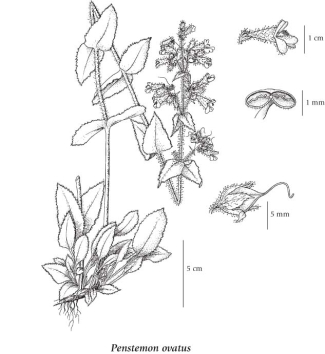Penstemon ovatus Douglas ex Hook.
broad-leaved penstemon (eggleaf beardtongue)
Plantaginaceae (Mare's-tail family)
(Previously in Scrophulariaceae)
Introduction to Vascular Plants
broad-leaved penstemon (eggleaf beardtongue)
Plantaginaceae (Mare's-tail family)
(Previously in Scrophulariaceae)
Introduction to Vascular Plants
